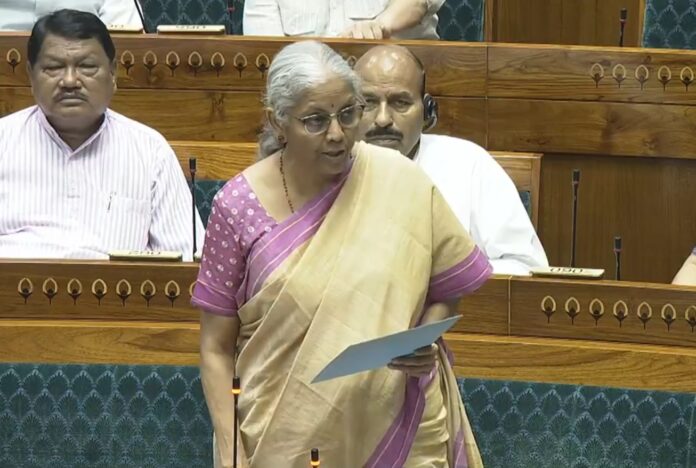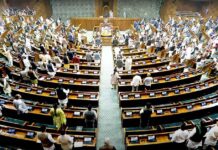Union Finance Minister Nirmala Sitharaman on Monday introduced a revised version of the Income Tax Bill, 2025, in the Lok Sabha, promising a simpler, fairer, and more transparent tax regime. The updated legislation incorporates 285 of the recommendations made by the Parliamentary Select Committee, chaired by BJP leader Baijayant Panda, following extensive review and consultations.
The Bill’s introduction was met with uproar from Opposition benches, but Sitharaman emphasised that the revisions were essential to convey “the correct legislative meaning” and remove ambiguity. “There are corrections in the nature of drafting, alignment of phrases, consequential changes and cross-referencing,” she told the House, noting that the earlier draft had been withdrawn to avoid confusion.
The revised draft aims to replace the Income Tax Act of 1961, which has been amended over 4,000 times and has grown into a complex text of more than five lakh words. Panda, speaking earlier on the committee’s findings, said the 2025 Bill cuts that bulk by nearly 50 per cent, making it significantly easier for ordinary taxpayers to understand and comply with.
Key among the changes are adjustments to slabs and rates that the government says will benefit all taxpayers, particularly the middle class. According to the Finance Ministry, the new structure will put more disposable income in households’ hands, boosting consumption, savings, and investment. For individual taxpayers and small businesses, the Bill also aims to reduce unnecessary litigation, streamline compliance, and align provisions with existing laws.
The Parliamentary Select Committee had flagged multiple drafting errors and inconsistencies in the earlier version, warning that they could lead to misinterpretation and disputes. Incorporating the bulk of the panel’s suggestions, the updated Bill offers a single, consolidated text that lawmakers can review without the need for multiple cross-references.
Panda described the overhaul as long overdue, saying India’s tax system had become “too complicated for even seasoned professionals” to navigate without difficulty. He added that the reforms are designed to “cut down legal confusion” and make the law more accessible to the average taxpayer.
The earlier draft of the Bill, first introduced in February, was withdrawn last week. Government sources indicated that the withdrawal was a procedural step to accommodate the large volume of suggested amendments, rather than a retreat from reform.
Once passed, the Bill is expected to reshape India’s income tax framework in ways that go beyond rate changes. Simplified language, clearer definitions, and modernised provisions could help ensure that both individuals and businesses spend less time on compliance and more on productive economic activity.
Tax experts say the move signals a shift toward codifying law in plain language, a practice common in advanced economies but less so in India’s legislative tradition. They believe that such simplification could also improve voluntary compliance, as clearer rules are harder to misinterpret.
While the Opposition has yet to detail its stance on the revised draft, the government appears determined to see it passed during the current parliamentary session. Sitharaman’s presentation stressed that the Bill balances fairness with administrative efficiency, and that the new rates and provisions have been framed to ensure inclusivity across income groups.
If enacted as proposed, the Income Tax Bill, 2025, would mark one of the most significant overhauls of India’s tax system in decades, aiming to replace a patchwork of amendments with a coherent, streamlined code fit for the modern economy.





